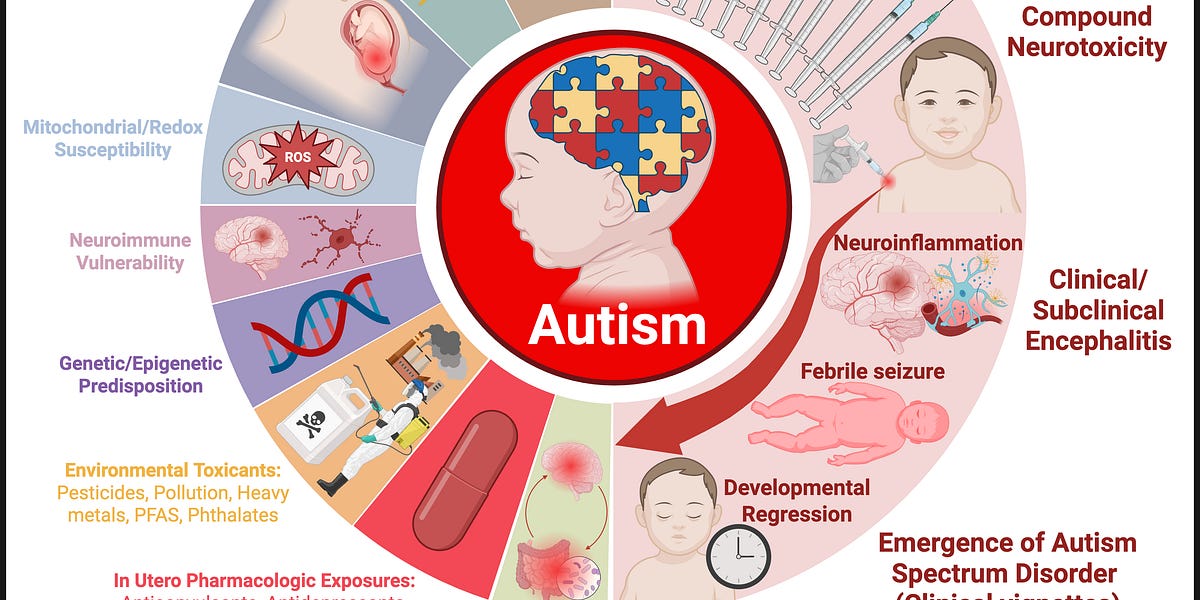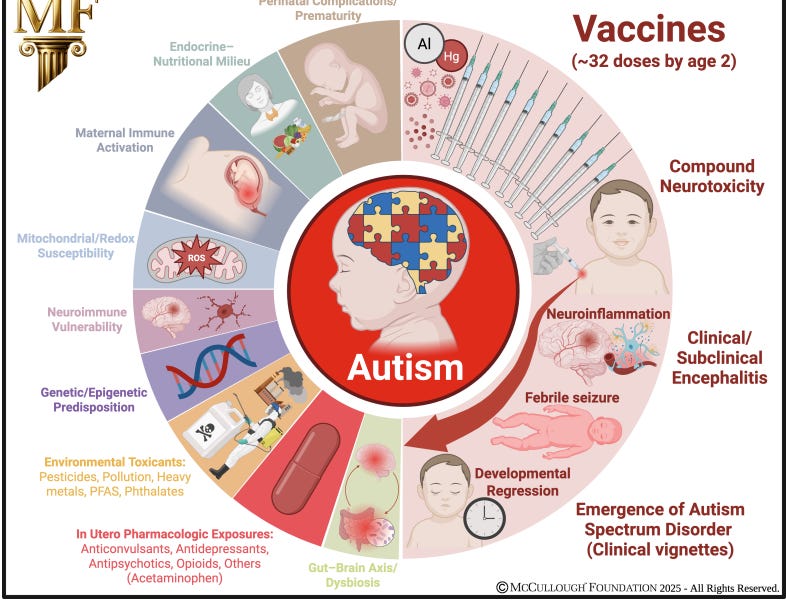Applying a Muckrake.ai Framework to "Education for All"
1. The Beautiful Story
Compulsory public schooling is presented as one of humanity's greatest achievements - a system designed to provide equal opportunity, develop human potential, and create informed democratic citizens. The narrative positions education as the great equalizer that allows children from any background to achieve success through merit and hard work.
The system claims to serve children's developmental needs by providing structured learning, social interaction, and preparation for adult life. It promises to create critical thinkers, responsible citizens, and skilled workers who can contribute to society and achieve personal fulfillment. The compulsory nature is justified as protecting children from exploitation and ensuring no child is denied the opportunity to learn and grow.
Parents are told they're giving their children the best possible start in life, teachers believe they're nurturing young minds and making a positive difference, and society celebrates education as an investment in the future. The narrative emphasizes values like opportunity, equality, knowledge, growth, and social progress - making questioning the system seem like opposing children's welfare and social advancement.
2. Evolved Survival Mechanisms Being Repurposed for Exploitation
Authority Deference: Children's adaptive respect for adult guidance and expertise is exploited to create unquestioning compliance with institutional authority, even when that authority serves systemic rather than individual interests.
Tribal Belonging: The essential need for peer acceptance and group membership is channeled into conformity pressure, where success requires fitting into predetermined social and academic categories rather than developing authentic individual capabilities.
Status Competition: Natural hierarchy navigation instincts are redirected into artificial competition for grades, rankings, and institutional approval rather than developing genuine competence or pursuing intrinsic interests.
Narrative Coherence: The cognitive need for meaningful explanations about life and society is satisfied through institutional narratives about success, citizenship, and social roles that serve system maintenance rather than individual understanding.
Future Discounting: Present-focused survival instincts are exploited through immediate reward/punishment systems (grades, praise, discipline) that train compliance while obscuring long-term costs to autonomy and authentic development.
Social Proof: Adaptive imitation of group behaviors is channeled into mass conformity, where "everyone goes to school" becomes evidence that institutional education is natural and necessary rather than a recent historical invention.
Threat Detection: Protective anxiety about children's futures is amplified through narratives about educational failure leading to life failure, creating parental compliance with systems that may actually harm children's development.
3. The Realmtiv Engine
Government: Creates compliant citizens trained in institutional obedience, standardized thinking, and acceptance of hierarchical authority. Produces workers with just enough skills to be productive but not enough independence to challenge existing power structures.
Corporate Employers: Receives pre-trained workers accustomed to following instructions, accepting evaluation by others, working within rigid schedules, and competing for approval from authorities. The system produces employees rather than entrepreneurs.
Educational Industry: Massive bureaucratic system employing millions of administrators, teachers, and support staff whose livelihoods depend on maintaining compulsory attendance regardless of educational outcomes.
Testing and Curriculum Companies: Billion-dollar industries that profit from standardized assessment and materials, with built-in obsolescence requiring constant updates and purchases.
Higher Education: Feeds students into college systems that extract further resources while providing credentials that primarily serve as class markers rather than indicators of competence.
Social Control Systems: Creates age-segregated populations that prevent intergenerational knowledge transfer and community formation that might challenge institutional authority.
Economic Planning: Provides predictable workforce development aligned with corporate needs rather than individual interests or community requirements.
4. Exploitation Mechanism Analysis
Time Extraction: Captures 12+ years of children's most developmentally crucial time, preventing them from learning through real-world experience, family relationships, or self-directed exploration.
Dependency Creation: Makes children dependent on external validation, institutional structure, and expert authority rather than developing internal motivation and self-directed learning capabilities.
Artificial Scarcity: Creates competition for limited "good" grades, college admissions, and career paths, making natural cooperation seem impossible and individual success dependent on others' failure.
Conformity Training: Rewards compliance, standardization, and institutional thinking while punishing creativity, independence, and questioning of authority.
Family Disruption: Separates children from families for most waking hours during crucial developmental years, weakening family bonds and transferring primary influence to institutional authorities.
Economic Extraction: Requires massive public funding that flows to educational bureaucracies, construction companies, technology vendors, and other corporate beneficiaries rather than directly serving children's learning.
Credential Inflation: Creates artificial requirements for institutional certification to access economic opportunities, forcing participation in the system regardless of actual skill or knowledge development.
Social Stratification: Despite equality rhetoric, actually reinforces class divisions through tracking systems, resource allocation, and cultural capital requirements that favor already-privileged families.
5. Narrative Wrapping Deconstruction
"Equal Opportunity" → Standardized processing that ignores individual differences, learning styles, and developmental timing while reinforcing existing social hierarchies.
"Preparing for Life" → Training for institutional compliance rather than developing real-world competence, independence, or entrepreneurial capabilities.
"Socialization" → Age segregation that prevents natural community integration and intergenerational learning while creating artificial peer pressure dynamics.
"Critical Thinking" → Teaching approved analytical frameworks while discouraging questioning of the educational system itself or fundamental social arrangements.
"Democratic Citizenship" → Training in procedural compliance and authority acceptance rather than developing genuine civic engagement or independent political thinking.
"Individual Development" → Mass standardization that treats children as interchangeable units requiring identical processing rather than unique individuals with different interests and capabilities.
"Child Protection" → Removing children from family influence and community learning while subjecting them to institutional control and peer pressure dynamics that often cause psychological harm.
"Investment in the Future" → Resource extraction from families and communities to fund bureaucratic systems that primarily serve adult employment rather than children's development.
6. Structural Reform Impossibility
Massive Employment System: Millions of jobs depend on maintaining compulsory schooling regardless of educational effectiveness, creating powerful constituencies opposed to fundamental change.
Credential Dependency: Economic system now requires institutional certification for most employment, making individual opt-out economically dangerous even when educationally beneficial.
Parental Compliance: Parents become enforcers of the system because questioning education seems like harming their children's future opportunities within the existing economic structure.
Legal Compulsion: Government mandate makes alternatives illegal or extremely difficult, preventing natural experimentation with different approaches to child development and learning.
Cultural Integration: System has become so normalized that alternatives seem impossible, dangerous, or selfish rather than potentially beneficial.
Regulatory Capture: Educational policy is made by people whose careers depend on maintaining and expanding institutional education rather than serving children's actual developmental needs.
Sunk Cost Defense: Society has invested so heavily in educational infrastructure and ideology that admitting fundamental problems would require acknowledging massive waste and misdirection.
Elite Coordination: Wealthy families use private schools and supplementary resources while supporting public schooling that keeps other families' children in institutional systems, maintaining competitive advantages.
7. Historical Evolution Analysis
Original Conditions: Industrial Revolution created need for standardized workers and concern about child labor, making institutional schooling seem beneficial compared to factory work.
Gradual Expansion: System expanded from basic literacy training to comprehensive life control, extending compulsory attendance age and adding more subjects and requirements.
Resistance Co-optation: Alternative education movements (Montessori, Waldorf, progressive education) were either marginalized or co-opted into the mainstream system without changing fundamental structure.
Narrative Sophistication: Evolved from explicit training for industrial compliance to sophisticated rhetoric about individual development, critical thinking, and democratic participation while maintaining the same basic institutional control structure.
Bureaucratic Growth: Administrative layers multiplied, creating self-perpetuating institutional interests that prioritize system maintenance over educational outcomes.
Technology Integration: New technologies are incorporated to modernize the appearance while maintaining fundamental power relationships and institutional control mechanisms.
8. Intelligence Trap Assessment
Credentialism: Intelligent people become more invested in the system because they succeed within it, making them defenders of institutional education despite recognizing its problems.
Professional Identity: Teachers and administrators develop professional identities around educational expertise, making fundamental criticism psychologically threatening to their self-concept.
Intellectual Frameworks: Academic research on education focuses on improving the existing system rather than questioning whether compulsory institutional schooling serves children's developmental needs.
Comparative Analysis: Intelligent people compare public schools to other institutional options (private schools, different curricula) rather than questioning whether institutional schooling itself is optimal for human development.
Reform Illusion: Smart people channel criticism into reform efforts that maintain the fundamental structure while providing the illusion of addressing problems.
Status Protection: Educated parents use their intelligence to navigate the system more effectively rather than questioning whether their children would be better served by non-institutional alternatives.
9. Psychological Dependency Mechanisms
Identity Integration: Children learn to define themselves through academic performance and institutional categories rather than developing authentic self-knowledge and interests.
External Validation: Constant grading and evaluation creates addiction to approval from authorities rather than internal motivation and self-assessment capabilities.
Learned Helplessness: Institutional structure teaches children they cannot learn without expert instruction and institutional resources, preventing development of self-directed learning abilities.
Social Status: Academic achievement becomes primary source of social hierarchy and peer acceptance, making institutional success psychologically necessary for belonging.
Future Anxiety: System creates fear that educational failure will lead to life failure, making compliance seem necessary for survival even when the education itself is harmful or irrelevant.
Cognitive Investment: Years of effort invested in academic success create psychological need to defend the value of that investment even when outcomes don't match promises.
10. Alternative Arrangement Suppression
Legal Barriers: Homeschooling restrictions, truancy laws, and regulatory requirements make alternatives difficult or illegal in many jurisdictions.
Economic Penalties: Families must pay taxes for public schools while also funding alternatives, creating financial pressure to use "free" institutional education.
Social Stigma: Alternative education choices are portrayed as selfish, irresponsible, or harmful to children, creating social pressure for institutional compliance.
Credential Recognition: Employers and colleges may not recognize non-institutional learning, making alternatives economically risky even when educationally superior.
Information Suppression: Success stories from alternative approaches are marginalized while institutional education problems are minimized or blamed on insufficient funding rather than structural issues.
Resource Monopoly: Public funding flows only to institutional schools, preventing development of diverse educational approaches that might demonstrate superior outcomes.
11. Victim Complicity Analysis
Parental Enforcement: Parents become enforcers of compulsory attendance because they believe they're protecting their children's futures, even when they recognize the system's problems.
Student Compliance: Children learn to defend the system that controls them because questioning it would require acknowledging years of wasted time and accepting responsibility for their own learning.
Teacher Advocacy: Teachers promote institutional education because their professional identity and economic security depend on maintaining the system, even when they see its harmful effects on children.
Graduate Recruitment: Successful products of the system become advocates who recruit others, using their own achievements to validate institutional education despite recognizing its limitations.
Reform Participation: Critics channel their concerns into reform efforts that maintain the fundamental structure while providing the illusion of addressing problems.
12. The Forgetting Mechanism
Generational Amnesia: Each generation forgets that institutional schooling is a recent historical invention, treating it as natural and inevitable rather than one possible approach to child development.
Problem Minimization: Negative experiences are dismissed as individual failures or specific institutional problems rather than evidence of systemic issues with compulsory institutional education.
Success Attribution: Positive outcomes are attributed to schooling rather than individual capability, family support, or other factors, maintaining faith in the system despite mixed evidence.
Alternative Erasure: Historical and contemporary examples of successful non-institutional learning are ignored or marginalized, preventing pattern recognition about educational alternatives.
Conclusion
This analysis reveals compulsory public schooling as a sophisticated system for producing compliant workers and citizens while extracting resources from families and communities to fund bureaucratic institutions. The "education for all" narrative conceals a system that primarily serves adult employment and social control rather than children's developmental needs.
The system succeeds not by educating children effectively, but by creating dependency on institutional authority, external validation, and credentialed expertise while preventing the development of self-directed learning, independent thinking, and authentic competence.
Most disturbingly, the system makes victims complicit in their own exploitation by convincing them that institutional processing is necessary for their success and that questioning the system would harm children's futures. Parents, teachers, and students all become enforcers of a system that may actually impede the human development it claims to promote.
The framework reveals why reform efforts consistently fail - the system is working exactly as it evolved to work, serving the interests of adults who benefit from institutional control rather than the children who are subjected to it.



